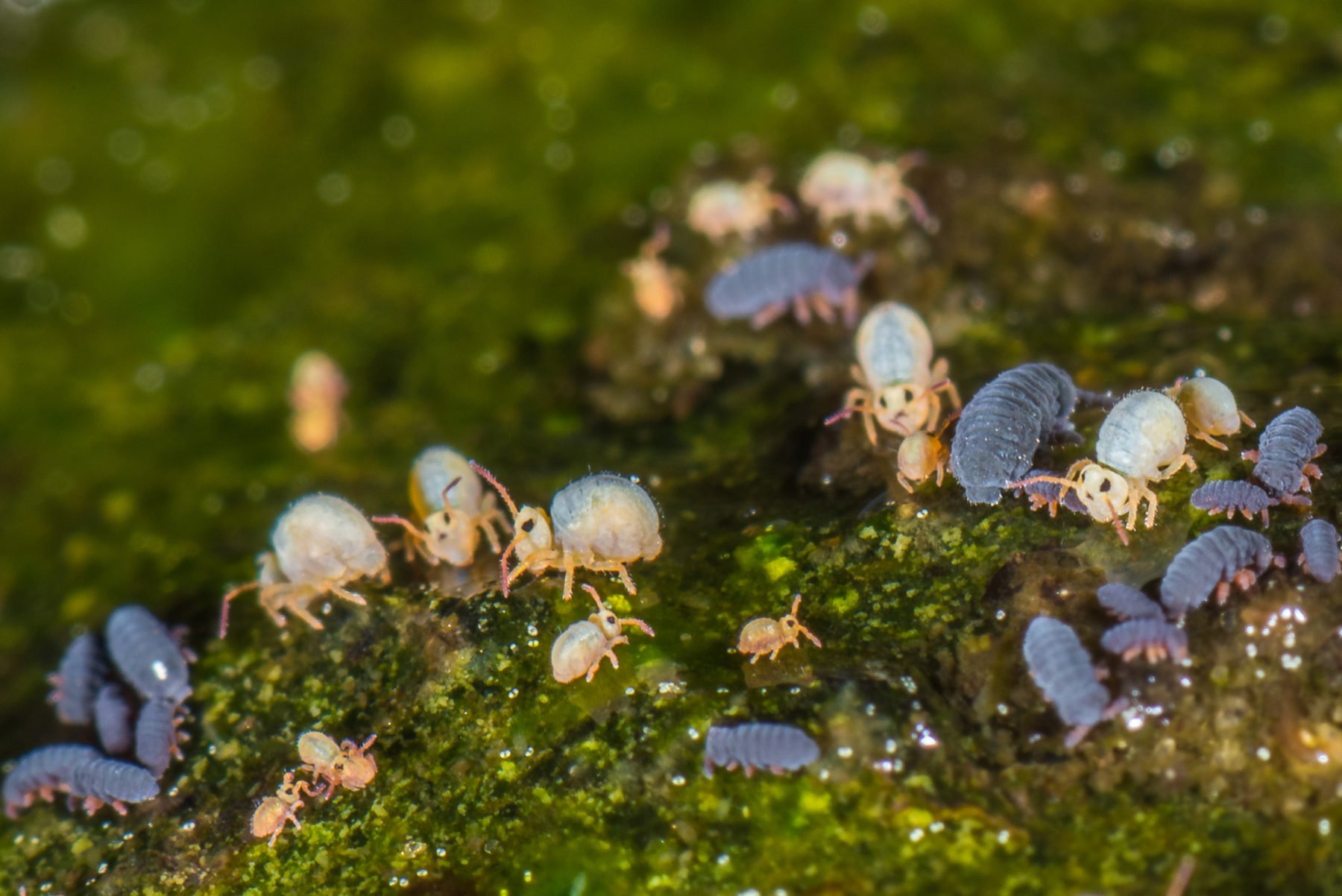Springtails are kinda cute?

Bec Crew
Bec Crew

Springtails form a large group of six-legged creatures called Collembola that are decidedly not insects. They share common features with insects, such as a head, a thorax and an abdomen, but they don’t have wings and they have softer bodies than insects and hidden mouthparts.
Springtails are named for the specialised organ that sits under their abdomen, which is held in place by tiny hooks. When released, the organ pushes on the ground and launches the springtail into the air.
Springtails can be found in all kinds of environments, from leaf litter, soil and sand to inside caves and termite mounds. They’re found all over the world, including throughout Australia, and they come in many different forms, sizes and colours.
There’s the Acanthanura springtail, for example, which can be found in Tasmania. At 9mm long, it’s pretty huge for a springtail – many other species are just 1 or 2 mm long. It also looks like a cross between the jellybean caterpillar and the trilobite beetle:
Other forms include the Adelphoderia springtail, which is also found in Tasmania and the south-easternmost corner of the Australian mainland and looks like a flea, and the Entomobrya springtail, which is a slender-bodied species that was introduced to Australia and has become an agricultural pest. (And it’s not the only one.)
Perhaps the cutest springtails are the water springtails. Here’s a photo of two different species, (Sminthurides aquaticus) and (Podura aquatica), hanging out together near a creek:

Sminthurides aquaticus are the cartoon aliens we met earlier, and Podura aquatica are the ones that look like slaters. Just look at them as babies:
What’s fun about springtails is that the males are significantly smaller than the females, which means those ones that look like babies in the congregations above are actually trying to court the larger ones.
As you can see in the wonderful footage below, it can get rather awkward:
But that’s underselling it, because like far more complex creatures, water springtails perform courtship rituals that involve interlocking their antennae and circling around each other as if they were performing a sweet little dance.
This can continue for hours and the result, hatched from tiny springtail eggs, is tiny springtail babies.
We’ll leave you with this footage of the springtail courtship dance. Shout out to the huge female grazing casually behind them:

